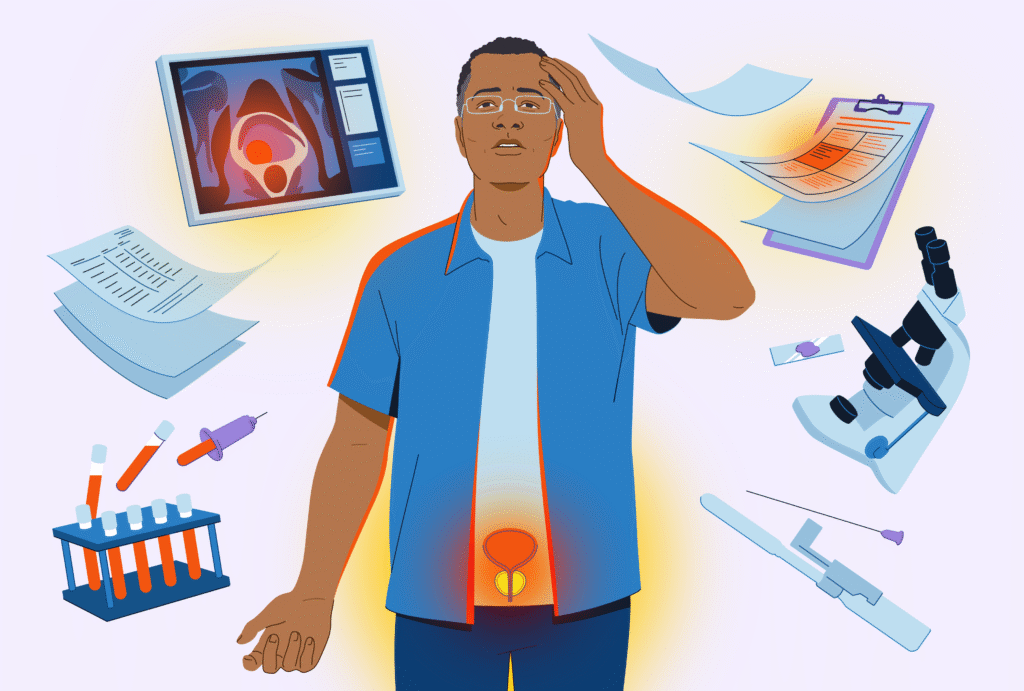Usually, you can live well for a long time with prostate cancer.
That’s because most cases are caught before the cancer has spread. In fact, more than 75% of diagnoses are made while the disease is still confined to the prostate. When that happens, the outlook is excellent: The five-year survival rate is nearly 100%.
But there’s an important catch: Those strong survival numbers depend heavily on regular prostate-specific antigen (PSA) blood tests. Prostate cancer that is caught later, after it has spread, typically has much poorer outcomes.
Both the American Urological Association and the American Cancer Society recommend that men start talking to their doctors about PSA screening at age 50. Those conversations should start even earlier, around 40-45, if you’re part of a high-risk group, like those with a family history of the disease. If you and your doctor decide PSA testing is right for you, screening is typically done every two to four years. It’s not recommended, though, for men over 70 or those whose life expectancy is under 10 years.
Screenings matter because prostate cancer usually doesn’t cause noticeable symptoms in its early stages. Signs you might think of as “red flags”—like painful urination, difficulty starting or stopping urination, or frequent nighttime bathroom trips—are often linked to other conditions such as benign prostatic hyperplasia (BPH) or prostatitis, not prostate cancer.
If you do receive a prostate cancer diagnosis, it’s important to remember you’re not alone. One in eight adults in the United States develops prostate cancer. Here, two men share their diagnostic journeys with us.
As the adage goes, “life comes at you fast.” I never imagined prostate cancer would become part of my story. At 37, I felt healthy, was focused on a new job and my family, and was settling into life after moving to Austin. Cancer wasn’t even on my radar. So when I went in for a routine checkup, the last thing I expected was news that hinted something could be seriously wrong. So the adage is correct: Life can change in an instant.
I was just 47 when my symptoms started. I was having to urinate so often, but my bladder never felt totally empty. When I urinated, my stream would be weak. With a full bladder and weak stream, I was having some pain from the pressure.
Even though men don’t usually get urinary tract infections (UTIs), I figured that’s what it might be. After all, I didn’t really drink enough water, which is a risk factor for UTIs. I drank some more fluids, but my symptoms persisted. I figured it was time to go to my primary care provider to get checked.
I told the doctor about my symptoms, and he did a urinalysis. My doctor said I had a UTI and gave me antibiotics to treat the infection.
I would go through a couple more rounds of misdiagnoses and antibiotics before I was ultimately diagnosed with stage 4 prostate cancer.


